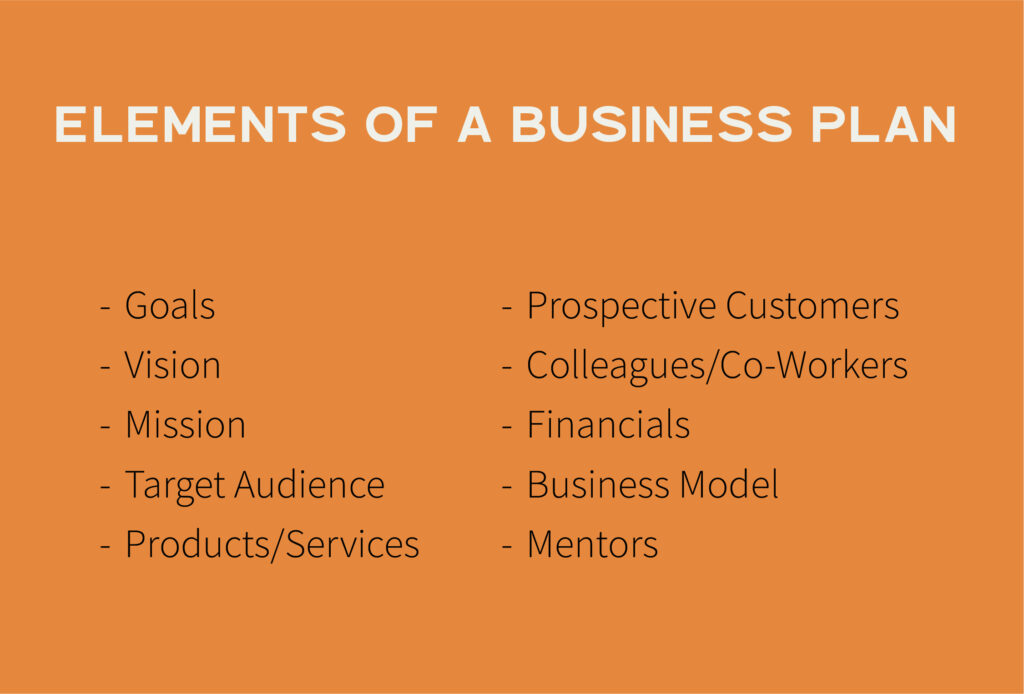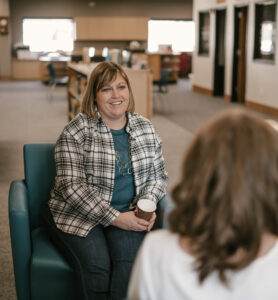We have worked with many entrepreneurs who have fantastic ideas and truly want to solve a problem or pursue an opportunity in the marketplace, but many people get stuck when it’s time to create and follow a dreaded business plan! Why can’t we just create a product or service and just start doing business? Well…the answer is…you can. You don’t have to have a written business plan to be successful, but it sure helps if you want your business to succeed long term and beyond your initial ownership.
I can tell you that by getting it down on paper (computer, napkin, legal pad, notes app on your phone, anywhere) it holds you more accountable and allows you to track progress year over year. For some, that business plan might be in your head, but I encourage you to write it down, no matter how simple it might be at first.
The Bureau of Labor Statistics reports that approximately 20% of new businesses fail during the first two years of being open, 45% during the first five years, and 65% during the first ten years. Only a mere 25% of new businesses make it to 15 years or more. So, what is it about these businesses that set them apart from the others?
I believe it’s about having a vision, setting a plan with goals, checking in frequently on that plan, and making difficult decisions to pivot when goals aren’t being met.
Where We Started
I’m only in year seven of my business, but here’s what I’ve seen and experienced. If you don’t begin somewhere, you may never get off the starting line!
When I first started my business plan in 2015, it was more of a place to get my ideas out of my head and on to paper. I didn’t exactly know when/where I was going to start that business, but I had a firm conviction of what I wanted to accomplish in life. I started by setting goals for myself as an entrepreneur without necessarily determining WHAT my business would actually be. To this day, these goals still guide my daily actions:
- Flexible work schedule that supports my family.
- Assist multiple clients to achieve their potential.
- Market Iowa to be more attractive to businesses, individuals, and families.
- Work from home.
- Continue to be challenged daily.
- Increase earning potential.
I then established a vision for the impact I wanted to have with this endeavor: to promote local businesses and organizations so they can contribute to thriving small towns and assist businesses, organizations, and communities (especially in small town Iowa) realize their potential and guide them in making decisions to develop and implement strategic marketing plans to achieve their goals. Today that vision is simplified to: Revitalizing Rural Iowa. As I began to think about how I might go about accomplishing that vision, I set my mission: to provide strategic marketing, communication, and branding support to the business and nonprofit communities. Today that mission remains very close to what it started as: inspire communities, businesses, and organizations to emerge from their shell and strategically explore opportunities to achieve success and longevity.
Next Steps
Then what? I know there are many other organizations doing similar things. What makes me different? Who would my ideal clients be? And why would anyone choose me?
To determine this, I looked at who my target audience would be: Iowa-based, small-to-medium sized businesses with 1-100 employees. Then I identified what types of services I could offer based on my past experiences.
- Marketing Strategy
- Marketing Consulting
- Marketing Training
- Marketing Plan Development & Execution
- Branding
- Graphic Design
- Publications
- Strategic Promotions (unified messaging)
- Photography
- Event Planning
- Fundraising
- Non-Profit Work
From there, I looked at who my prospective customers could be. Those whom I had connections with (the business owners or community leaders I already knew who could either use my services or have had a personal experience with and could help with word-of-mouth support) as I was moving to a completely new area of the state where I had fewer connections.
I also needed to keep in mind that I likely wouldn’t be able to do it all, so I thought of all the smart and creative people I had worked with in the past and how I would love for them (or people like them) to be my advisors, colleagues, and coworkers in the future.
I then began to look at the financial side of the business. What were the start-up costs? How about the income potential? What would I need to be financially stable and successful?
When I began to consider my business model, especially as it related to my goals of entrepreneurship, I realized quickly that I didn’t want to reinvent the wheel. There were already super successful entrepreneurs who offered similar marketing services, had been in business, and learned the ropes of being successful in this industry.
This process would take another year before I got up the courage to actively pursue this conversation because that meant I actually had to share my ideas with others. I hadn’t even really told my husband about my plans for the future! Read about that story here!
It wasn’t until June of 2016 that I finally reached out to my good friend and business owner Samantha Grove who gave me exceptional insight into her business model and was open about her path of owning a small business. Having a mentor who is willing to help guide you, share their challenges, help you learn from their mistakes, and listen when life gets rough is the most valuable investment I think there is in business. It’s these types of people who are needed most when the road gets lonely and weary because they will remind you why you’re here and reignite that passion you may have lost. It was my initial meeting with Samantha, a pursued conviction in my mind, and my ability to ‘emerge‘ from the comfort of my own shell that put all the wheels into action to set this business plan ablaze!
Where We Are Today
Our business plan today is much more than it started as. It’s actually a strategic plan that gets reviewed/referenced quarterly and updated annually. (If the word “strategic” scares you, don’t let it!! It just means that you’re being purposeful in developing the actions you want to pursue to be successful).
My point in all of this is to encourage you to:
1. Start SOMEWHERE! You don’t need to have ‘all the right things’ to get started.
2. Put it in writing! I can’t tell you how grateful I am to be able to look at those first ‘ideas’ that I put together in what I thought was a business plan and see how our journey has evolved, yet how we’ve never veered too far from our vision.
3. Celebrate Progress and Success. As we look at our business plan every year, we now evaluate year-over-year:
- Internal celebrations and top successes from the year
- Client celebrations from the past year
- SWOT analysis (Strengths, Weaknesses, Opportunities, and Threats)
- Goals/Accomplishments from the various perspectives of our business: customer, internal business, financial, and learning & growth
- Financial review
- Upcoming year outlook
- Establish a guiding word/theme for the new year
- Individual and team goal setting for the year
For those of you who have been in business for a while and haven’t taken these steps, I encourage you to start! It’s NEVER too late, especially if you’re feeling stuck.
I pursued this business to help entrepreneurs and business/community leaders emerge from the comfort of their own space and pursue their life’s calling with passion, planning, and purpose. If you need help getting un-stuck our team is here to help! Let us know if we can help you ’emerge’!






No comment yet, add your voice below!